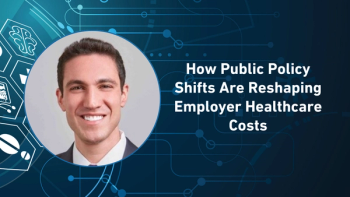
HDMA looks closely at 'buy and bill' in specialty pharma distribution
Will 'white bagging' and specialty-pharmacy business practices change distribution dynamics?
It’s well recognized that how a specialty drug gets delivered to the point of dispensing—the clinic, the doctor’s office or, in some cases, the patient directly—affects drug pricing. In some broader consequences, though, there is a logic to developing drugs specifically for certain distribution channels—or at least, to minimize obstacles between the availability of the drug and how it is dispensed.
That’s one of the implications of a newly published report from the Center for Healthcare Supply Chain Research, the research arm of HDMA. (A coauthor of the report is Health Strategies Group, a Lambertville, NJ, consulting firm). Specialty Pharmacy: Implications of Alternative Distribution Models, examines the two primary distribution paths for specialty drugs (especially oncolytics): “buy and bill,” where physician practices purchase drugs directly from a distributor; and “white bagging” or “external delivery,” where the drug is shipped from the manufacturer to a specialty pharmacy, and then to the physician practice. In the latter case, the physician is not purchasing the drug out of its own pocket, but simply arranging reimbursement for dispensing the drug, whose cost has been arranged between the payer (e.g., an insurance plan) and the specialty pharmacy. In buy and bill, historically, physician practices buy the drug at Average Sales Price (ASP) plus a markup of 6-18% of ASP.
Based on interviews and industry research, the Center finds that larger physician practices prefer buy and bill while smaller ones prefer external delivery and that, while payers support both models, “the tendency to mandate External Delivery by private payers appears to be slowing for specialty medications that warrant in-office dosage modifications, especially for oncolytics.” In-office dosage usually implies formulating infusion products based on patient medical needs.
Also implicit in the growth of external delivery is that pricing can be better controlled. One thing’s for sure—there is a lot of money flowing through specialty channels; the Center pegs 2012 US drug sales at $86.1 billion in 2012, representing roughly a quarter of all drug sales, and it is growing faster than the overall drug market. Buy and bill used to be a key element in oncologists’ (among other medical specialties) compensation, but there are working-capital costs, and the ASP markup has been shrinking.
Based on a limited number of distributors, specialty pharmacies, payers and physician practices (respondents ranged from a handful to a dozen or so in each category), the Center finds that:
- The preference for buy and bill ranges from 59% for non-oncology specialists, to 95% for large oncology practices
- On average, private payers range between 45% and 76% in having no mandate for buy and bill or external delivery; large regional plans (not part of the Blue Cross/Blue Shield organizations) mandate external delivery 55% of the time (including 23% that mandate a specific specialty pharmacy)
- Contractual use of external delivery for office-administered oncolytics has been declining since 2010 (based on earlier Health Strategies Group research).
Given the marketplace dynamics here, one would expect specialty pharmacies to be aggressively expanding their foothold in external delivery, but the study found that “external delivery comprises a small portion of most of the interviewed specialty pharmacies’ business volume,” (roughly 10%), and that “specialty pharmacy executives interviewed for this study expressed neutral opinions on whether the use of external delivery is accelerating.”
The study also makes two key points in comparing buy and bill with external delivery. Externally delivered drugs often lack the manufacturer’s labeling (having been formulated at the pharmacy), creating a product-integrity vulnerability; and that both good medical practices and state prescribing laws require formulated drugs to be destroyed if not dispensed per prescription instructions (such as when the patient does not show up for an infusion), thus creating wastage and potential costs to the physician. “Distributing specialty pharmaceuticals is complex; curbing costs is just one of the many facets of providing patient-centered healthcare. Site-of-care and day-of administration dosage requirements revealed themselves as determining factors for supporting the use of one method over another. A critical look at unintended consequences leads to our conclusion that Buy and Bill is, for the time being, the preferred model for practitioners of medium to large oncology clinics, but that could change as specialty treatments evolve,” concludes Karen J. Ribler, EVP and COO of the Center.
One of the more interesting trends that the study notes is the shift to non-formulated specialties: “[B]ecause many … oncolytics in the pipeline are oral formulations (which do not require physician administration or an in-office dosing adjustment), it is possible that many of these drug therapies can be handled through traditional drug distribution channels, including retail pharmacy and mail order,” concludes the report.
Specialty Pharmacy: Implications of Alternative Distribution Models is available at no charge at the Center
Newsletter
Stay ahead in the life sciences industry with Pharmaceutical Commerce, the latest news, trends, and strategies in drug distribution, commercialization, and market access.



